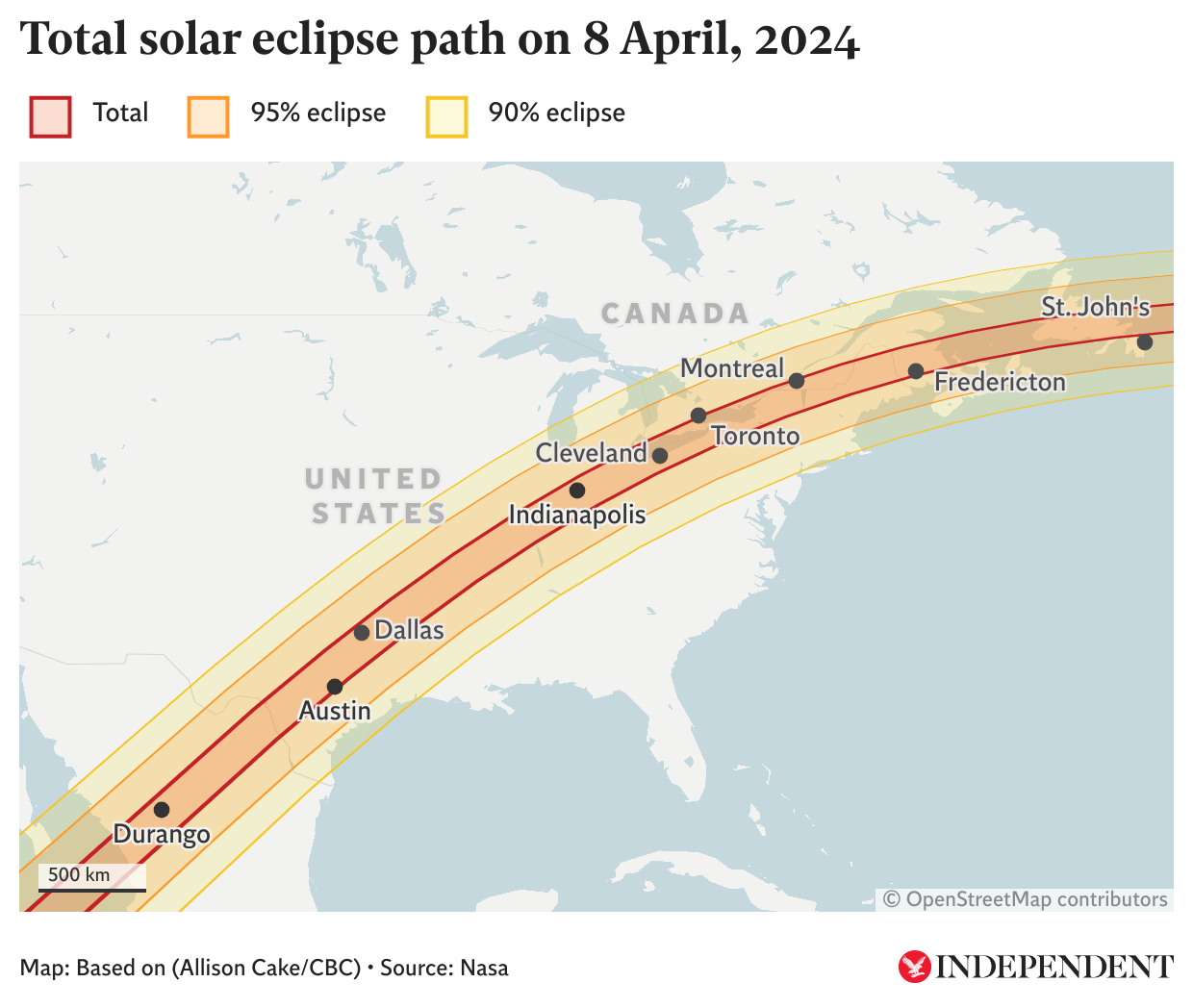Missed the solar eclipse? Here’s when and where the next ones will be
Total solar eclipses are seen every 400 years from any one place on the surface of the Earth
The moon will blot out the sun for millions of people in North America along a path crossing from Mexico into the United States and then Canada in a total solar eclipse on Monday, April 8.
The rare occurrence will see many flocking to catch a glimpse of the Moon completely covering the Sun as they stand in the darkest part of the Moon’s shadow.
There are between two and five solar eclipses each year with a total eclipse taking place every 18 months or so.
Total solar eclipses are seen every 400 years from any one place on the surface of the Earth.
The next total eclipse of the Sun visible from the UK is in September 2090, and nearby there will be another one in 2026 that is visible in northern Spain, tracking up to Iceland.
The last time a total solar eclipse was seen from the UK was in 1999, although the only place to witness totality was Cornwall.
On October 14, 2023, people along a path stretching from the US Pacific Northwest, through Mexico, Central America, Colombia and Brazil witnessed an annular solar eclipse, a slightly different event.

An annular solar eclipse occurs when the moon passes between the sun and Earth when the moon is at or near its farthest point from our planet. Thus, it does not completely cover the face of the sun, leaving what looks like a “ring of fire” in the sky.
People in various parts of the world will get to experience more eclipses in the coming months and years, according to NASA.
An annular solar eclipse will occur on October 2 of this year, visible in South America, with a partial eclipse visible in South America, Antarctica, the Pacific Ocean, the Atlantic Ocean and North America.

A partial solar eclipse will occur on March 29, 2025, visible in Europe, Asia, Africa, North America, South America, the Atlantic Ocean and the Arctic Ocean.
A partial solar eclipse will occur on September 21, 2025, visible in Australia, Antarctica, the Pacific Ocean and the Atlantic Ocean.
An annular solar eclipse will occur on February 17, 2026, visible in Antarctica, with a partial eclipse visible in Antarctica, Africa, South America, the Pacific Ocean, the Atlantic Ocean and the Indian Ocean.
The next total solar eclipse will occur on August 12, 2026, visible in Greenland, Iceland, Spain, Russia and a small portion of Portugal, with a partial eclipse visible in Europe, Africa, North America, the Atlantic Ocean, the Arctic Ocean and the Pacific Ocean.
Join our commenting forum
Join thought-provoking conversations, follow other Independent readers and see their replies
Comments
Bookmark popover
Removed from bookmarks